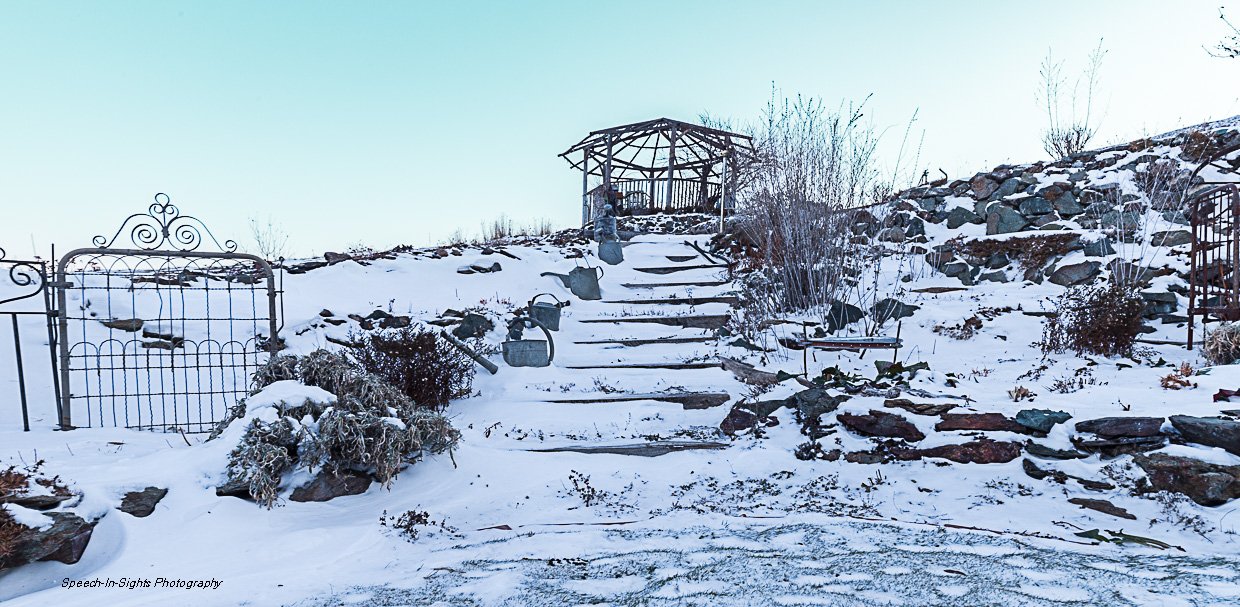Landscape Photography
Reminiscent Of The Stairway To Heaven @ Peniel
The Art of Landscape Photography
Landscape photography is an exciting genre of photography that allows you to capture a moment in nature that others will enjoy.
At Speech-In-Sights Photography, we recognize that landscape photography is a powerful way to showcase the beauty of God's creation. As we explore the art of capturing nature's majesty, we're reminded of the intricate details and grand vistas described in the book of Genesis.
Through our lenses, we aim to reveal the glory of creation as proclaimed by the Psalmist.
Understanding the Basics of Landscape Photography
As simple as it sounds, landscape photography is not just about creating images of places. Neither is it just about capturing colorful landscapes. It is about capturing a place's “affect and mood”.
Essential Equipment for Landscape Photographers
Looking and seeing are certainly not the same thing. Look with your eyes and see with your camera lens. “Until you look through your camera lens, you never can tell what you will see”. Wide-angle lenses (35mm focal length and below) have a wide angle of view, hence, they are commonly employed in capturing vast landscapes. However, do not underestimate the value of telephoto lenses (85mm focal length and above) for shooting distant subjects such as mountain tops in landscape photography.
My Canon EF 16-35 mm f4L lens has worked well for me over the years, but I know there are many great competitors out there that will also deliver “flawless” images. In reality, there is no “flawless” image. Other essential tools include a good camera; preferably a full frame camera. However, you can take beautiful landscape pictures with a crop-sensor camera as well. I use both.
A good and steady tripod is indispensable. The lack of it may result in blurry pictures, particularly at night or at relatively slower shutter speeds. Even the wind blowing at the wrong time may produce a blurry image.
The Importance of Lighting and Timing
Landscape photographers may prefer to shoot in what is known as the ‘golden hours’, which is the first couple of hours after dawn and the last couple of hours before sun set. However, do not to limit yourself to the gorgeously lightened “golden hours”.
Do not hesitate to try something new. Bad weather, such as storms, brings cloudy skies, giving images filled with unique lighting and unforgettable moods.
Remember that it is difficult to produce good quality pictures under harsh lighting such as when the sun is overhead. Investing in neutral density (ND) filters may become necessary if you intend to shoot when the sun is out and shinning. Do not forget to include polarizing filters in your kit. This helps reduce glare & reflection from water and wet vegetation, but it also improves the saturation of the sky. These adjuncts are certainly not essential to start your journey.
Composition Techniques to Elevate Your Landscape Photos
Subject content is the core business of any magnificent image. Composition refers to organizing objects within your chosen picture plane to produce an image that tells the story you intend to project or emphasize.
Composition helps you arrange all the elements in a way that gradually draws the viewers eyes from the foreground all the way to the background without loosing focus on the main subject in the entire scene.
The Rule of Thirds and Leading Lines
The rule of thirds is one of the most well-known “rules” in composition. It is a compositional guideline that breaks an image down into nine equal pieces using four gridlines. The gridlines help in the placement of key elements such as the horizon or the main subject. For instance, your main subject could be placed off center, along the left or right vertical gridline, while the horizon could be placed along the top or bottom horizontal gridline.
Overall, the “rule” produces a well balanced and pleasing composition. However, as you experiment more, beautiful images may yet evolve from breaking this rule.
Incorporating Foreground Interest
Oh, the foreground—do not leave it out! Having interesting objects in the foreground of your landscape gives you depth with an added sense of the context of the entire scene. This could be anything from rocks, grass, snow, flowers to water reflections.
Post-Processing Tips for Stunning Landscape Images
Landscape photography is almost incomplete without image editing in post-processing. These techniques enhance the images you have captured and bring out the best in them. Typically, most photographers use either lightroom or adobe Photoshop. I use Lightroom for convenience.
Using Graduated Filters
Graduated filters, whether hard ones, which are physical ones, or soft, which are digital ones, will assist in equal exposure in skies and foregrounds. This is very important in maintaining details of a scene when some parts of the scene differ vastly in terms of brightness such as we have in high dynamic range scenes.
Conclusion
Landscape photography is a way of life. Once you adopt it, you get stuck!
It’s about interacting with nature, breaking barriers and photography rules, and constantly improving your skills. As with any other photographic journey, remember that every landscape has a distinct narration. “Let the ears of your lens listen to the story composed by nature and let your edited image speak to the heart of the matter”.
As you embark on your landscape photography journey, remember that each image you capture is a testament to the beauty of God's creation.
At Speech-In-Sights Photography, we invite you to use your camera as a tool for appreciation and reflection. Let your landscape and cityscape images speak to the glory of creation, offering viewers a place to pause, listen, and marvel at the intricate tapestry of nature that surrounds us all.
